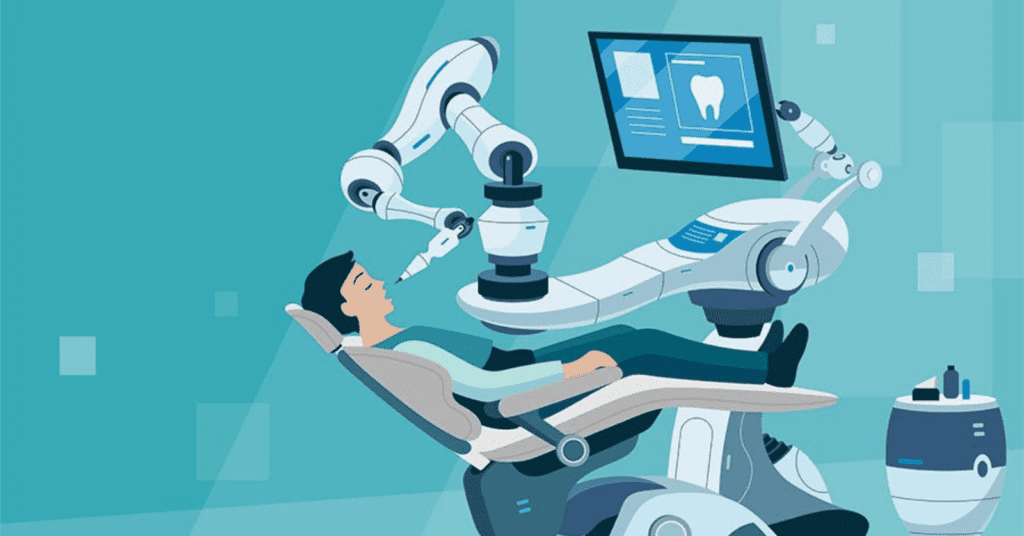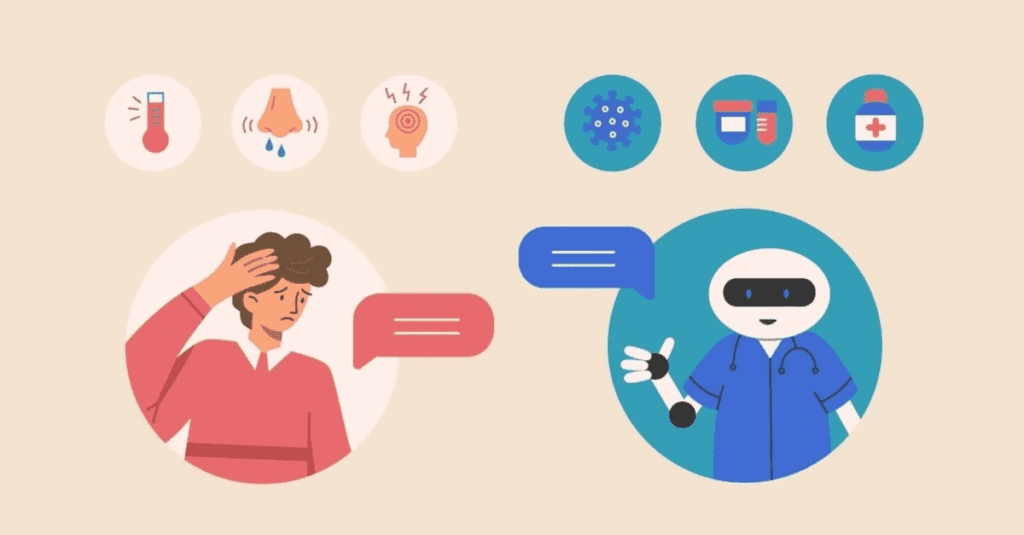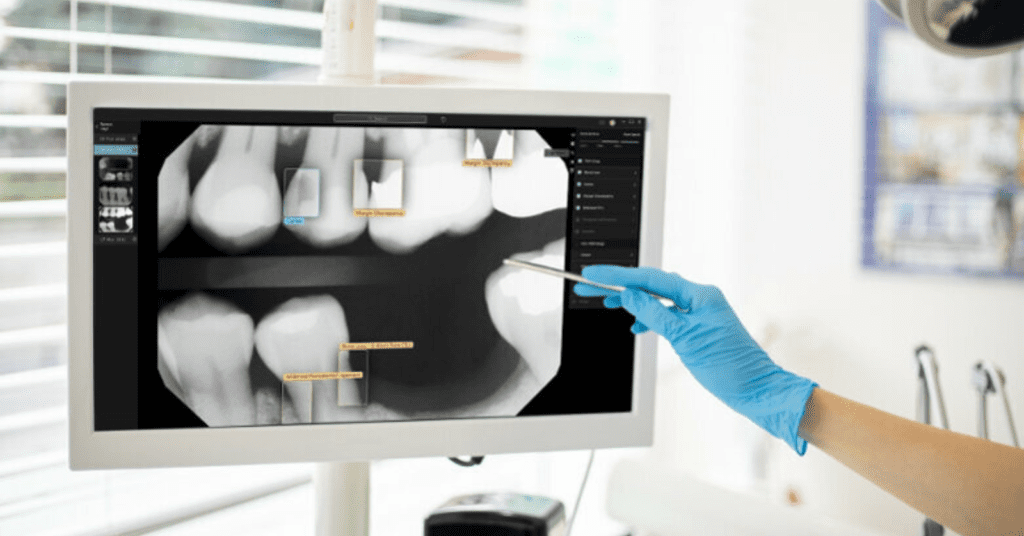
Alvin Chan BA (Econ/SEA) (Singapore), MBA (Edin), DBA (US)
Dr. Alvin Chan is the Yvon Pfeifer Professor of Artificial Intelligence & Emerging Technologies at the Institute of Artificial Intelligence & Robotics (IAR) of Cambridge Corporate University in Switzerland. With a wealth of expertise spanning economics, education, business administration, and artificial intelligence, Dr. Chan’s focus on AI and emerging technologies, coupled with his extensive teaching experience, positions him as a key figure in educational and business technology research and development. His dedication to advancing AI-assisted applications for educational and business purposes has earned him recognition as a trailblazer in his field.
The potential of AI has permeated multiple facets of dental practice technology, where tailored treatment recommendations, intelligent diagnostics, and accessible care are redefining patient experiences.
In the ever-evolving landscape of modern dentistry, the emergence of Artificial Intelligence (AI) has ushered in a transformative era. With AI’s profound influence permeating various industries, from robotics to image recognition, the realm of healthcare has been fundamentally reshaped. Within this sphere, dentistry has emerged as a particularly significant domain, embracing AI across various facets of patient care. In this article, we delve into the intersection of AI and dental care, a promising frontier that promises to revolutionise the customer experience.
Elevating Patient Experience through AI
By harnessing AI’s capabilities, dental facilities empower themselves to provide personalised, efficient, and effective dental services while optimising operational costs. Through the analysis of patient data, clinics can deliver tailored treatment recommendations, thereby elevating the quality of care and overall treatment outcomes.
Furthermore, AI-driven diagnostic systems and virtual assistants expedite the diagnostic process and automate administrative tasks such as appointment scheduling and patient communication. The result is a dental experience marked not only by heightened convenience and efficiency but also by accessibility round the clock, effectively relieving the burden on dental staff.
Beyond its immediate impact on customer experience, AI’s integration into dental clinics brings profound enhancements in operational efficiency. By harnessing AI’s automation capabilities, clinics can minimise manual labour and reduce the occurrence of errors, culminating in substantial cost savings.
Moreover, AI lends itself to effective inventory management through predictive analysis, anticipating demand patterns, optimising supply chain logistics, and maintaining inventory levels at their optimal thresholds. This judicious allocation of resources empowers dental clinics to deliver superior care while concurrently optimising costs.
As AI technology continues its upward trajectory, it holds the tantalising potential to reshape the entire dental landscape, ushering in an era characterised by personalised care, heightened efficiency, and an unparalleled elevation of the customer experience.
Revolutionising Oral Disease Diagnosis

Accurate diagnosis serves as the cornerstone of effective disease management, and AI has proven to be a formidable ally in this regard. Its proficiency in image analysis has sparked a revolution in the diagnosis of oral diseases. AI’s employment of artificial neural networks has honed the precision of CT image reconstruction. However, its true prowess lies in intelligent diagnosis through image analysis, excelling in identifying conditions such as osteoporosis,1 dental caries,2 and oral squamous cell carcinomas3 with remarkable precision.
AI’s deployment of machine learning, with its neural networks, directly addresses the challenge of enhancing CT images. Enter the residual convolutional neural network (RED-CNN), meticulously designed for low-dose CT imaging. This innovation merges deconvolution networks with shortcut connections, effectively amplifying noise reduction, preserving structure, and detecting damage. The net result is an elevated efficacy in CT image reconstruction and noise suppression.4
AI’s capabilities extend beyond image enhancement, venturing into intelligent diagnosis. In fields such as oral restoration and endodontics, AI-driven systems accurately measure tooth surface cavity diameters and detect dental caries, respectively. In the domain of oral and maxillofacial surgery, AI plays a pivotal role in diagnosing periodontally compromised teeth and determining the necessity of tooth extraction, thereby empowering surgeons’ decision-making capabilities.5

Precision Preoperative Planning
The intersection of AI with precision is most pronounced in the crafting of treatment plans. Clinical decision support systems, powered by AI, mitigate the impact of human errors by offering customised treatment recommendations. These systems bridge the gap between input, processing, and output, providing clinicians with expert guidance.
Clinical decision support systems extend their influence across various oral domains, from orthodontics to prosthodontics. By optimising treatment options, predicting restoration lifespans, and guiding implant treatment planning, these systems ensure successful dental interventions while minimising errors, ultimately elevating patient satisfaction.6
AI-based disease prediction models play a pivotal role in designing effective treatment strategies. These models anticipate post-surgery outcomes, augmenting clinical decision-making. Predictive models forecast implant success rates and even postoperative pain levels.7
Empowering Surgical Progress
AI’s capabilities extend into the surgical arena, fuelling high-precision robotic systems and active navigation solutions. These innovations empower surgeons to surmount challenges and achieve optimal surgical outcomes.
Active navigation systems provide surgeons with enhanced visibility during procedures, overcoming limitations stemming from obscured vision or bleeding. These systems offer real-time visualisations, aiding in facial penetrating surgery and enhancing surgical precision.

The surge in AI-driven robotics is revolutionising dentistry across orthodontics, maxillofacial surgery and implantology.8 These robots enable automated orthodontic arch wire bending, precise denture alignment, and accurate implant surgery. They enhance efficiency, reduce errors, and usher in breakthroughs in oral surgery.8
<< Back to Contents Menu
EDITOR’S PAGE | ADVISORY BOARD | NEWS | PRODUCTS | COVER FEATURE | CLINICAL | PROFILE | EXHIBITIONS & CONFERENCES | PRODUCT TIPS | DENTAL BUSINESS
Integrated systems merge navigation and robotic capabilities, paving the way for advanced surgical platforms. These systems bolster surgeon capabilities, streamline complex operations, and pioneer next-generation surgical methodologies.
Post-Surgical Care and Recovery
AI’s role extends beyond surgery, focusing on patient recovery and providing insights into postoperative conditions. Precision nursing, facilitated by AI, harnesses data and modern technology to offer personalised and effective care.9
Harnessing advanced technologies to enhance various facets of dental care, AI’s integration in clinics presents opportunities to revolutionise customer experience.
Below, we delve into the specifics of AI’s advantages and applications in dental clinics:
Tailored Treatment Recommendations
By integrating AI-powered tools, dental professionals can analyse extensive patient data, encompassing medical histories, treatment records, and diagnostic images. AI algorithms can discern patterns and trends from this data, enabling dentists to provide finely tuned treatment recommendations tailored to individual needs and preferences. This personalised approach ensures enhanced patient satisfaction, as treatment plans align closely with each patient’s distinct requirements.
AI-Assisted Diagnostic Tools
AI technology aids dentists in diagnosis by analysing radiographic images, intraoral scans, and other diagnostic data.10 Machine learning algorithms deployed in AI tools can assist in identifying potential issues or anomalies that might be overlooked, contributing to more accurate and efficient diagnoses. This leads to early detection of oral health problems, improved treatment planning, and ultimately better patient outcomes.10
Virtual Assistants and Chatbots

AI-powered virtual assistants and chatbots revolutionise the dental experience for patients. These tools can manage a gamut of tasks, from appointment scheduling to reminders. Operating 24/7, patients can book appointments, receive customised reminders, and notifications, significantly reducing the administrative load on dental staff. This automation streamlines communication, leading to heightened customer satisfaction.9
Smart Appointment Scheduling
AI-driven appointment scheduling software improves booking processes based on historical data and patient preferences. This results in better appointment times, considering factors like treatment duration, dentist availability, and patient preferences. As a result, patient wait times are reduced, resource allocation is optimised, and the clinic’s patient flow becomes more efficient. Patients benefit from a smoother experience with shorter wait times and enhanced convenience.
Enhanced Accessibility
AI applications, such as virtual assistants and chatbots, extend dental care accessibility by offering patient support and information 24/7. Patients can seek guidance, ask questions, and receive basic dental advice anytime, anywhere. This accessibility is especially valuable for those in remote areas or with limited mobility, as they can access dental care resources and assistance from the comfort of their own surroundings.

In essence, the integration of AI in dental clinics has the potential to elevate customer experience by providing personalised treatment recommendations, enhancing diagnostics, streamlining administrative tasks, and expanding access to dental care.10 These advancements contribute to increased patient satisfaction, reduced risks of errors, and improved overall oral health outcomes.
Conclusion
AI’s remarkable journey within dentistry encompasses intelligent diagnosis, surgical precision, treatment planning, and postoperative care. While challenges involving data security, accuracy, and personalised care are part of its evolving narrative, AI’s horizons continue to expand. An integrated system encompassing diagnosis, planning, assistance, and rehabilitation is poised to emerge as AI technology matures. AI holds immense potential in reshaping dentistry, transcending traditional practices, and ushering in a new era of medical innovation and reform.
The amalgamation of AI technology is reshaping dental care, steering it toward a realm where personalised treatment, streamlined processes, and exceptional customer experience converge harmoniously. As AI’s trajectory continues to ascend, the future of dentistry gleams brighter, underscored by unparalleled capabilities and transformative prospects.
References
- Ong, W. et al. (2023) Artificial intelligence applications for osteoporosis classification using computed tomography, MDPI. Available at: https://www.mdpi.com/2306-5354/10/12/1364.
- Schwendicke F;Cejudo Grano de Oro J;Garcia Cantu A;Meyer-Lueckel H;Chaurasia A;Krois J; (no date) Artificial Intelligence for Caries Detection: Value of data and information, Journal of dental research. Available at: https://pubmed.ncbi.nlm.nih.gov/35996332/.
- Elmakaty a et al. (2022) Accuracy of artificial intelligence-assisted detection of oral squamous cell carcinoma: A systematic review and meta-analysis, Critical Reviews in Oncology/Hematology. Available at: https://www.sciencedirect.com/science/article/abs/pii/S1040842822002013.
- Zang, X. et al. (2022) A deep learning model using convolutional neural networks for caries detection and recognition with endoscopes, Annals of translational medicine. Available at: https://www.ncbi.nlm.nih.gov/pmc/articles/PMC9843352/.
- Krishnan, D. (2022) Artificial Intelligence in oral and maxillofacial surgery education, Oral and maxillofacial surgery clinics of North America. Available at: https://pubmed.ncbi.nlm.nih.gov/36224076/.
- Altalhi, A.M. et al. (2023) The impact of artificial intelligence on Dental Implantology: A narrative review, Cureus. Available at: https://www.ncbi.nlm.nih.gov/pmc/articles/PMC10685062/#:~:text=AI%20can%20analyze%20large%20patient,thereby%20optimizing%20the%20implant%20process.&text=While%20applications%20of%20AI%20in,study%20by%20Lerner%20et%20al.
- Chen, Y.-C. et al. (2023) Improving dental implant outcomes: CNN-based system accurately measures degree of peri-implantitis damage on Periapical Film, MDPI. Available at: https://www.mdpi.com/2306-5354/10/6/640.
- Ahmad, P. et al. (2021) Dental robotics: A Disruptive Technology, Sensors (Basel, Switzerland). Available at: https://www.ncbi.nlm.nih.gov/pmc/articles/PMC8151353/.
- Johnson, K.B. et al. (2021) Precision Medicine, AI, and the future of Personalized Health Care, Clinical and translational science. Available at: https://www.ncbi.nlm.nih.gov/pmc/articles/PMC7877825/.
- 10. Shafi, I. et al. (2023) A comprehensive review of recent advances in artificial intelligence for dentistry E-health, MDPI. Available at: https://www.mdpi.com/2075-4418/13/13/2196.
The information and viewpoints presented in the above news piece or article do not necessarily reflect the official stance or policy of Dental Resource Asia or the DRA Journal. While we strive to ensure the accuracy of our content, Dental Resource Asia (DRA) or DRA Journal cannot guarantee the constant correctness, comprehensiveness, or timeliness of all the information contained within this website or journal.
Please be aware that all product details, product specifications, and data on this website or journal may be modified without prior notice in order to enhance reliability, functionality, design, or for other reasons.
The content contributed by our bloggers or authors represents their personal opinions and is not intended to defame or discredit any religion, ethnic group, club, organisation, company, individual, or any entity or individual.

